
When the conversation turns to saving fuel, our minds often jump straight to cutting-edge hybrid engines or the latest lightweight materials. These are undoubtedly crucial pieces of the puzzle, yet there’s a formidable, often overlooked player that profoundly impacts how efficiently your car moves: aerodynamics. It’s the invisible force that car designers battle and harness, shaping every curve and angle to defy the wind.
Aerodynamics is the fascinating science of how air interacts with moving objects. In the world of automobiles, this means meticulously engineering how air flows around your vehicle. A sleeker, more thoughtfully designed car allows air to glide past with minimal resistance, meaning your engine expends less effort to push through the wind, translating directly into significant fuel savings and a more stable, quieter ride. It’s a delicate dance between form and function, where aesthetic appeal often aligns perfectly with engineering brilliance.
Japanese car manufacturers, in particular, have long been pioneers in this domain. They’ve consistently demonstrated a mastery of smart aerodynamic design, not only boosting fuel efficiency and drastically reducing emissions but also ensuring their vehicles look incredibly stylish on the road. From everyday sedans to specialized hybrids, the dedication to aerodynamic excellence is evident in their innovative approaches and the tangible benefits they deliver to drivers worldwide. Let’s peel back the layers and uncover the ingenious design choices that make such a profound difference.
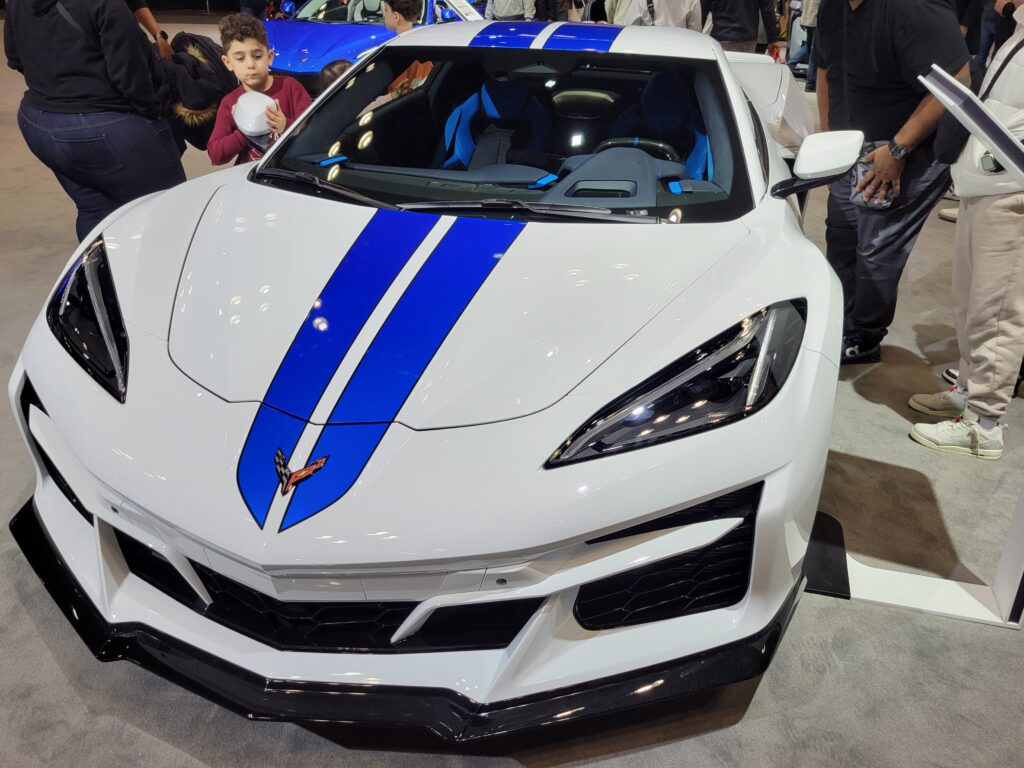
1. **What Aerodynamics Means for Your Car’s Design**
Aerodynamics, at its core, is all about conquering drag—the persistent resistance a car encounters as it slices through the air. Imagine trying to push a flat board through water versus a sharp, streamlined boat; the principle is identical. High drag forces your engine to work considerably harder, consuming more fuel and generating more emissions. Conversely, a low-drag design allows your vehicle to glide effortlessly, enhancing fuel efficiency, increasing potential speed, and significantly improving stability, especially at higher velocities.
Japanese automakers have honed this science into an art form. Their vehicles often feature thoughtfully sculpted designs that incorporate curved edges, which gently guide air around the body, and tapered roofs that smoothly transition the airflow over the car’s rear. Furthermore, flush surfaces and clever air channeling systems are integrated throughout the design, meticulously managing airflow to reduce turbulence and improve overall efficiency. These elements are not merely aesthetic; they are fundamental engineering solutions.
From the very genesis of a vehicle concept, engineers and designers collaborate to imbue it with aerodynamic superiority. This means scrutinizing every aspect, from the subtle curvature of the windshield to the precise angle of the rear deck. The goal is to create a harmonious form that minimizes air resistance from every direction, allowing the car to move through its environment with the least possible effort. It’s a holistic approach to design where every millimeter counts in the quest for optimal performance.
Ultimately, aerodynamics is the silent partner in your car’s performance equation. It’s about creating a vehicle that doesn’t just look good, but actively works with the forces of nature, rather than fighting against them. This foundational understanding underpins every advanced feature and innovative solution discussed in the realm of automotive design, laying the groundwork for more efficient and enjoyable driving experiences.
Read more about: The 2025 Chevy Corvette Lineup: A Deep Dive into How the New Models Elevate America’s Favorite Sports Car
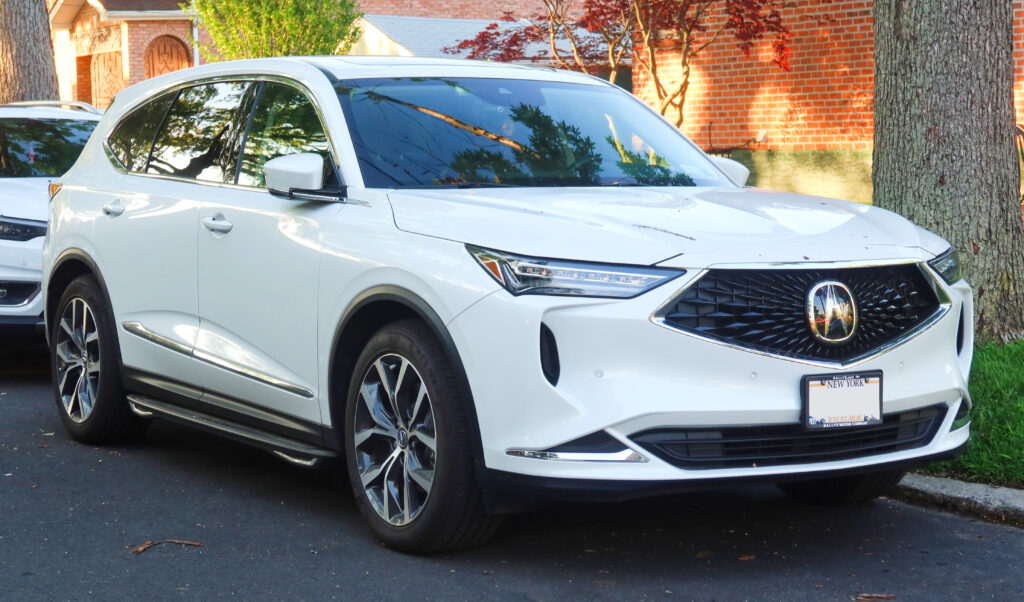
2. **The Direct Link Between Design and Fuel Economy**
Understanding the direct correlation between aerodynamic design and fuel economy is crucial for any driver looking to maximize their vehicle’s efficiency. The fundamental principle is straightforward: less air resistance means the engine doesn’t have to exert as much energy to maintain speed. This reduction in effort translates directly into a decreased need for fuel, making your car more economical to run and kinder to the environment.
When a car’s design minimizes drag, it experiences several real-world benefits that impact your daily driving. Foremost is the significant improvement in fuel economy, as the engine can operate more efficiently without constantly battling against resistive forces. This inherent efficiency also leads to lower emissions, as burning less fuel naturally reduces the carbon output of the vehicle. It’s a win-win scenario for both your wallet and the planet.
Beyond just fuel economy, a car designed with superior aerodynamics offers enhanced high-speed stability. With smooth airflow, the vehicle stays firmly planted on the road, reducing unwanted sway and lift that can compromise handling. Furthermore, the harmonious flow of air around the body greatly diminishes wind noise within the cabin, contributing to a noticeably quieter and more comfortable ride for all occupants. Iconic vehicles like the Toyota Prius and Honda Insight are prime examples, celebrated for their aerodynamic profiles that deliver impressive mileage without sacrificing comfort.
Effectively, every design choice aimed at reducing drag has a cascading positive effect. Minimizing the force that pushes against a vehicle as it moves forward directly reduces the amount of energy required to sustain its momentum. This translates into tangible savings at the pump, making the car more affordable to operate over its lifespan, while simultaneously contributing to a cleaner atmosphere by consuming less fossil fuel. The impact is significant, particularly at highway speeds where air resistance becomes the dominant force the engine must overcome.
Read more about: The Ultimate Guide to Used Car Hidden Gems: 12 Models Offering Unbeatable Reliability and Value

3. **How Design Shapes Speed: Overcoming Air Resistance**
When we talk about a vehicle’s potential top speed, aerodynamics is not just a factor; it’s a critical determinant. Air resistance, or drag, stands as one of the most formidable adversaries to achieving higher speeds. As a vehicle accelerates, the resistance it encounters from the air intensifies, creating a substantial hurdle that the engine must continuously overcome. Understanding this relationship is fundamental for engineers striving to design faster, more efficient automobiles.
One of the most compelling aspects of air resistance is its exponential increase with speed. This isn’t a linear relationship; doubling a car’s speed doesn’t merely double the aerodynamic drag—it quadruples it. This dramatic escalation means that at higher speeds, the engine dedicates a disproportionately larger amount of its power simply to pushing through the air, rather than generating more forward momentum. This insight profoundly influences how high-performance vehicles are conceived and engineered.
To achieve blazing speeds with minimal energy waste, vehicles must be painstakingly designed with aerodynamics at the forefront. This is why high-performance sports cars and racing machines boast sleek, incredibly low-profile bodies. Streamlined shapes, characterized by smooth, continuous curves, are paramount, as they allow air to flow seamlessly over and around the vehicle. Lowering the car’s ride height also plays a vital role by minimizing the gap between the chassis and the ground, thereby reducing turbulent airflow underneath.
Furthermore, advanced vehicles often incorporate active aerodynamic features. These dynamic elements, such as adjustable spoilers and diffusers, can modify airflow in real-time. They are designed to adapt to various driving conditions, maintaining optimal stability while simultaneously minimizing drag. This sophisticated interplay of design and technology ensures that even with powerful engines, the vehicle can truly unlock its top speed potential without compromising control.
Without meticulous aerodynamic optimization, even an engine churning out immense horsepower would struggle to propel a vehicle to its theoretical maximum speed. Engineers are constantly seeking a delicate yet powerful balance: designing for minimal drag to enhance speed, while simultaneously generating sufficient downforce to keep the car firmly planted and stable at incredible velocities. This precise equilibrium is the hallmark of high-performance automotive engineering, enabling vehicles to both accelerate swiftly and maintain unwavering control at their peak speeds.
Read more about: Your Guide to Military-Grade Gear: 16 Indispensable Surplus Items Civilians Can Purchase

4. **Smooth Underbody Panels: The Hidden Efficiency Booster**
While much attention is given to a car’s visible exterior, some of the most impactful aerodynamic enhancements are subtly integrated beneath the surface. Underbody panels, often referred to as aerodynamic shields, represent one of these crucial, yet frequently unseen, features. Their primary role is to manage and smooth the airflow beneath the vehicle, a critical area often overlooked but responsible for significant drag if left unaddressed.
The underside of a conventional vehicle is typically a chaotic landscape of exposed components: exhaust pipes, suspension arms, transmission housing, and various cables. This irregular surface creates considerable turbulence as air rushes underneath the car, generating unnecessary drag that works against the vehicle’s forward motion. Underbody panels act as a smooth, continuous surface, effectively streamlining this area and drastically reducing airflow disruption.
By creating a flatter, more uniform undercarriage, these panels allow air to flow more cleanly from the front to the rear of the vehicle. This reduction in turbulence not only decreases overall aerodynamic drag but also contributes to better high-speed stability by minimizing undesirable lift. The result is a more efficient car that requires less energy to maintain speed, translating directly into improved fuel economy.
These panels are becoming increasingly prevalent, especially in vehicles where maximizing efficiency is paramount. Hybrid and electric vehicles (EVs), for instance, frequently incorporate completely flat underbodies as a core design principle. For EVs, every ounce of efficiency contributes directly to extending their driving range, making smooth underbody airflow an indispensable element in their engineering. This commitment to detailed aerodynamic optimization, even in areas unseen, underscores the continuous push towards greater vehicle performance and sustainability.
5. **Rear Spoilers and Diffusers: Balancing Grip and Glide**
When considering aerodynamic features, rear spoilers and diffusers are often among the first that come to mind, particularly in the context of performance vehicles. However, their applications and benefits extend far beyond the racetrack, playing a significant role in enhancing the efficiency and stability of many modern road cars. These components are expertly designed to manage airflow at the rear of the vehicle, reducing lift and enhancing traction.
Spoilers, typically installed on the trunk lid or roofline, are not merely aesthetic additions. Their primary function is to disrupt the airflow as it separates from the vehicle’s body, preventing the creation of a low-pressure area that could generate lift. By effectively ‘spoiling’ the airflow, they help to push the car downwards onto the road, thereby increasing the downward force, or downforce, on the rear wheels. This added downforce is crucial for maintaining tire grip and stability, especially at higher speeds and during aggressive cornering.
Diffusers, found beneath the rear bumper, complement the work of spoilers by optimizing the airflow as it exits from under the vehicle. They are designed to accelerate the air passing beneath the car and then gradually expand it as it exits, creating a low-pressure area. This effect ‘sucks’ the car to the ground, generating additional downforce and further enhancing stability. This controlled exit of air also helps to reduce turbulence and drag, contributing to overall aerodynamic efficiency.
While prominently featured on high-performance sports cars, where extreme downforce is critical for track performance, many everyday vehicles now incorporate subtle spoilers and integrated diffusers. These milder versions are designed not just for stability but also to contribute to overall aerodynamic efficiency, helping to reduce drag and improve fuel economy. They represent a sophisticated application of aerodynamic principles, balancing the need for stability and grip with the overarching goal of efficiency.
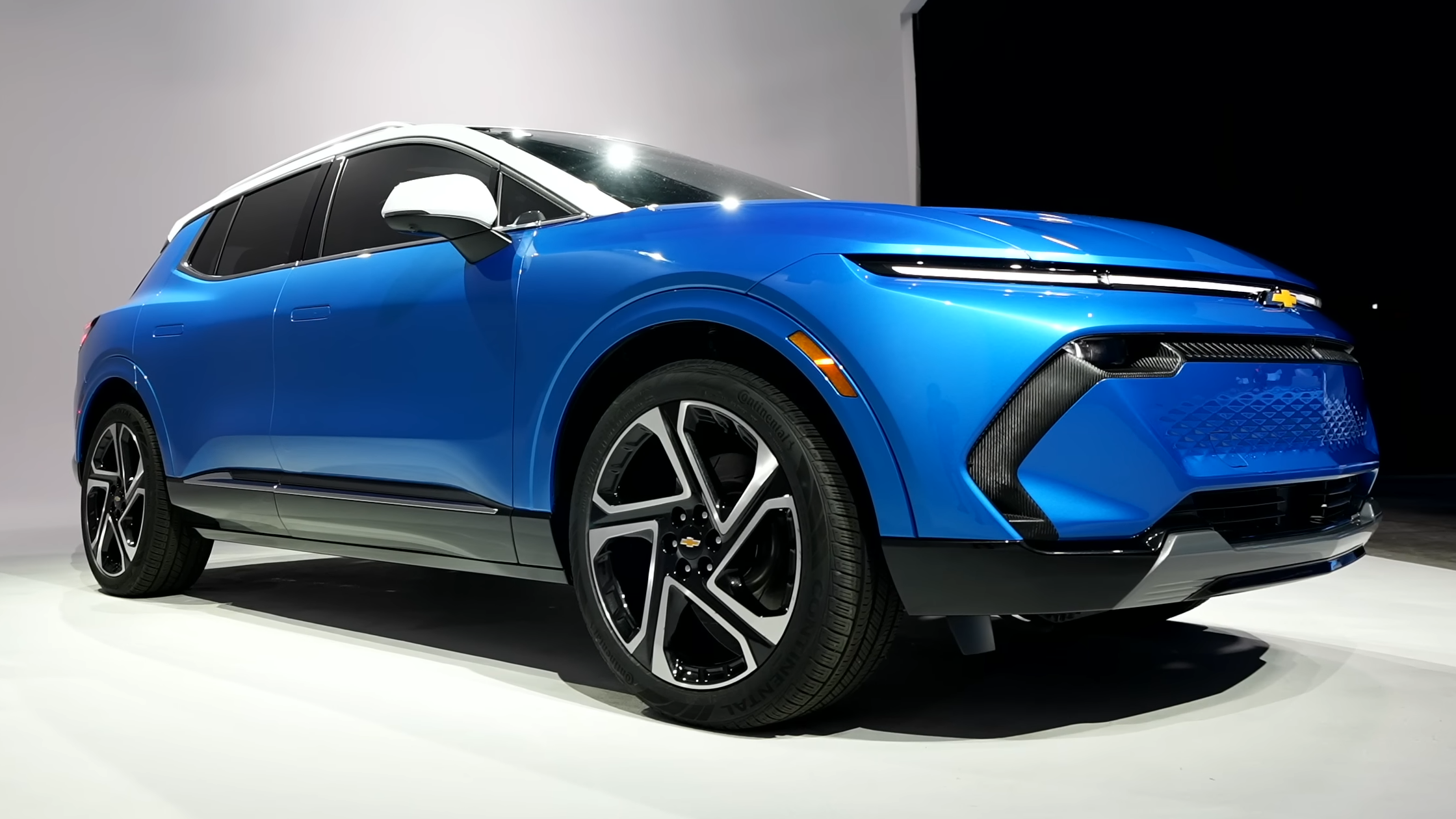
6. **Tapered Rear Design: Mastering the Teardrop Shape**
One of the most elegant and effective principles in aerodynamic design is the ‘teardrop’ shape, universally recognized as the ideal form for minimizing air resistance. This natural shape, widest at the front and gradually tapering to a point at the rear, allows air to flow smoothly over and around an object before gently converging behind it, significantly reducing the turbulent wake that generates drag. Automotive designers meticulously apply this principle through tapered rear designs.
Vehicles that feature a distinctly tapered rear mimic this optimal teardrop form. Instead of abruptly cutting off the airflow at a blunt rear end, which creates a large area of low pressure and turbulence, a tapered design allows the air to gradually detach from the vehicle’s body. This gentle separation helps to keep the airflow attached for longer, preventing the formation of a chaotic wake that actively pulls the car backward and increases drag.
The inclusion of a tapered rear design is a direct strategy for reducing what is known as ‘pressure drag.’ This type of drag occurs when there’s a significant pressure difference between the front and rear of an object. By allowing the air to converge more smoothly behind the vehicle, the tapered design helps to equalize these pressure differences, thereby lowering the resistance the car faces as it moves forward. The benefit is a car that glides through the air with less effort.
This design philosophy is evident in many fuel-efficient vehicles, where every facet of the car’s shape is optimized for minimal resistance. The goal is to make the car’s profile as slick as possible, allowing the air to ‘close in’ naturally behind it without creating disruptive eddies. Such an approach not only improves fuel economy but also contributes to a quieter ride, as less turbulent air flow translates into reduced wind noise around the cabin. It’s a prime example of how thoughtful design can harness natural principles for enhanced performance and efficiency.
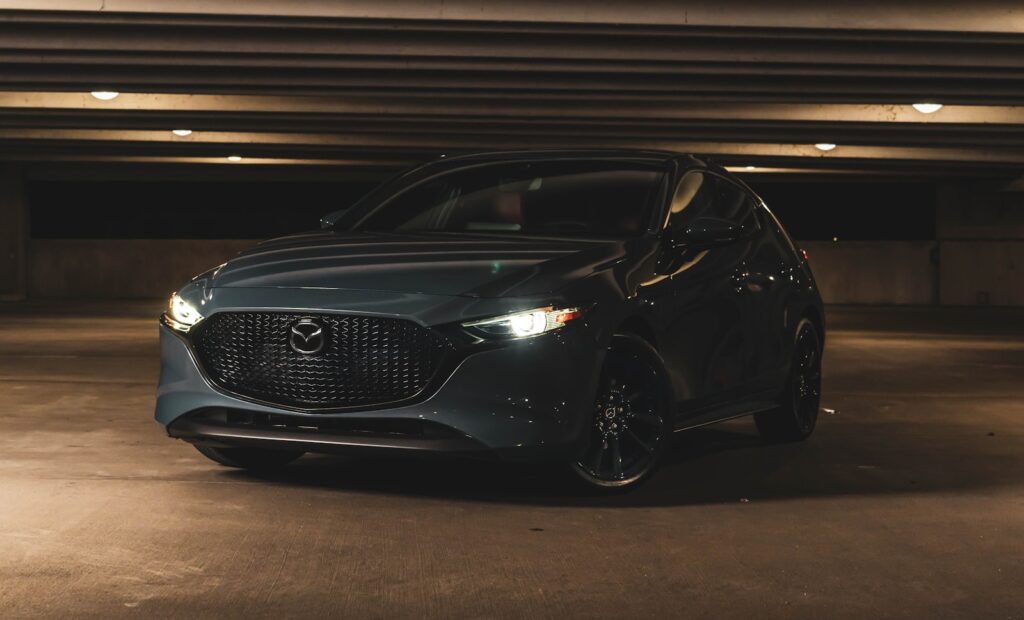
7. **Active Grille Shutters: Intelligent Airflow Management**
While many aerodynamic features are static, a new breed of innovation involves dynamic components that actively respond to driving conditions. Among the most ingenious of these are active grille shutters, a brilliant piece of engineering that allows vehicles to adapt their aerodynamic profile in real-time. These shutters are positioned in the front grille, an area traditionally open to allow air to cool the engine, but also a significant source of aerodynamic drag.
At lower speeds or when the engine requires more cooling, these shutters remain open, performing their conventional role of directing air to the radiator. However, as the vehicle accelerates to higher speeds, where aerodynamic drag becomes the dominant force, the active grille shutters swiftly close. This seemingly simple action transforms the car’s frontal area into a much smoother surface, drastically reducing the amount of air resistance it encounters.
The genius of active grille shutters lies in their ability to provide a dual benefit. They ensure optimal engine cooling when needed, preventing overheating during demanding conditions or slow city driving. Simultaneously, by closing when possible, they minimize airflow resistance at highway speeds, significantly boosting fuel efficiency and allowing the car to slice through the air with less effort. It’s a sophisticated dance between necessity and efficiency, all orchestrated seamlessly by the car’s control systems.
This technology highlights a growing trend in automotive design: the integration of smart, responsive systems that continuously optimize performance. Active grilles are a prime example of how engineers are pushing beyond fixed designs, creating vehicles that can dynamically adjust their form to achieve the best possible balance of performance, cooling, and aerodynamic efficiency in any driving scenario, from urban crawls to open-road cruising.

8. **Flush Door Handles and Mirrors: Minimizing Every Protrusion**
In the relentless pursuit of aerodynamic perfection, no detail is too small to escape the scrutiny of designers and engineers. Even seemingly innocuous elements like door handles and side mirrors, which have traditionally protruded from a car’s body, are now being reimagined to contribute to overall aerodynamic efficiency. The advent of flush door handles and sleeker, more integrated mirror designs represents a meticulous approach to minimizing every possible source of air resistance.
Conventional door handles, with their distinct shapes and mechanisms, create tiny pockets of turbulence as air flows over the car’s sides. Similarly, traditional side mirrors, while essential for visibility, act as significant obstacles, disrupting the smooth laminar flow of air and generating considerable drag. These individual disruptions might seem minor in isolation, but their cumulative effect can be surprisingly substantial, especially at higher speeds.
Modern design addresses this by integrating door handles flush with the bodywork, often retracting when not in use. This creates an uninterrupted surface, allowing air to glide cleanly over the car’s flanks without encountering snag points. Side mirrors have also undergone a revolution, becoming smaller, more streamlined, and often incorporating subtle aerodynamic sculpting to minimize their impact on airflow, guiding air smoothly past the vehicle rather than creating a chaotic wake.
This commitment to seamless surfaces underscores the principle that every protrusion, no matter how small, adds to a car’s aerodynamic drag. By eliminating or minimizing these disruptions, designers are able to achieve even lower drag coefficients, directly translating into better fuel economy and a quieter cabin due to reduced wind noise. It’s a testament to the fact that true innovation often lies in perfecting the smallest, most overlooked elements of a design.
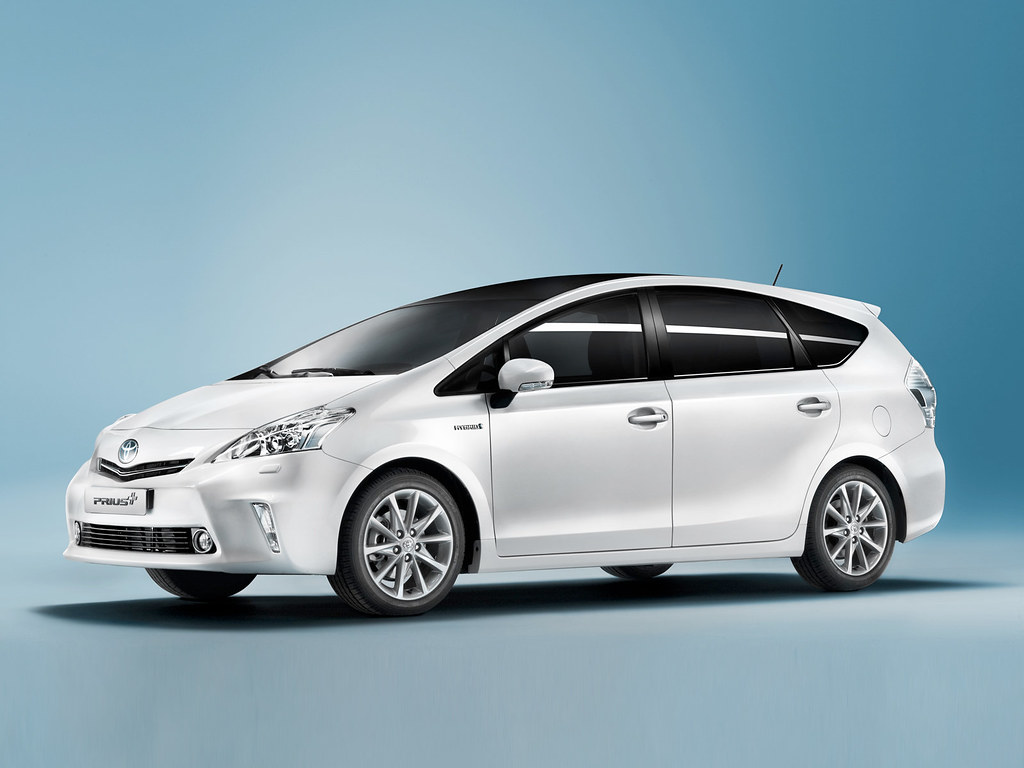
9. **Toyota Prius: A Pioneer in Aerodynamic Hybrid Design**
When we discuss vehicles that have redefined efficiency through design, the Toyota Prius stands as an undeniable icon. Since its inception, the Prius has been engineered with aerodynamics at its very core, pioneering a shape that has become synonymous with fuel economy. Its distinct profile isn’t just a matter of style; it’s a meticulously crafted form optimized to cut through the air with remarkable ease, setting a benchmark for hybrid vehicles worldwide.
The Prius’s design famously embraces the ‘teardrop’ shape, which we explored earlier as the optimal form for minimizing air resistance. Its sharply sloped windshield, gently curving roofline, and distinctively tapered rear all work in concert to guide air smoothly over and around the vehicle. This deliberate shaping prevents the formation of turbulent wakes that actively pull a car backward, ensuring that the air detaches from the body with minimal disruption.
This aerodynamic mastery directly underpins the Prius’s legendary impressive mileage. By significantly reducing the effort required for the engine to push the car through the air, less fuel is consumed, leading to substantial savings at the pump and a reduced carbon footprint. The integrated design, where form follows the function of efficiency, has made the Prius a real-world example of how thoughtful aerodynamics can transform daily driving economics.
Beyond just raw efficiency, the Prius also demonstrates that aerodynamic excellence doesn’t have to come at the expense of comfort or practicality. Its smooth airflow contributes to a noticeably quieter ride inside the cabin, minimizing wind noise. This harmonious blend of cutting-edge efficiency and a comfortable driving experience solidifies the Toyota Prius’s status as a true pioneer, proving that innovative design can deliver both ecological benefits and an enjoyable ride.
Car Model Information: 2019 Toyota Prius Prime Advanced
Name: Toyota Prius
Caption: Fifth generation Prius (XW60)
Manufacturer: Toyota
Production: December 1997 – present
ModelYears: 2001–present (US)
Class: ubl
BodyStyle: unbulleted list
Layout: unbulleted list
Sp: uk
Categories: 2000s cars, 2010s cars, 2020s cars, All-wheel-drive vehicles, All Wikipedia articles in need of updating
Summary: The Toyota Prius ( PREE-əss) (Japanese: トヨタ・プリウス, Hepburn: Toyota Puriusu) is a car produced by Toyota since 1997 over five generations. The Prius has a hybrid drivetrain, which combines an internal combustion engine and an electric motor. Initially offered as a subcompact four-door saloon, it has been produced only as a compact five-door liftback since 2003.
The Prius was developed by Toyota to be the “car for the 21st century”; it was the first mass-produced hybrid vehicle, first going on sale in Japan in 1997 at all four Toyota Japan dealership chains, and subsequently introduced worldwide in 2000.
In 2011, Toyota expanded the Prius family to include the Prius v, an MPV, and the Prius c, a subcompact hatchback. The production version of the Prius plug-in hybrid was released in 2012. The second generation of the plug-in variant, the Prius Prime, was released in the U.S. in November 2016. The Prius family totaled global cumulative sales of 6.1 million units in January 2017, representing 61% of the 10 million hybrids sold worldwide by Toyota since 1997. Toyota sells the Prius in over 90 markets, with Japan and the United States being its largest markets.
Get more information about: Toyota Prius
Buying a high-performing used car >>>
Brand: Toyota Model: Prius
Price: $24,956 Mileage: 55,039 mi.
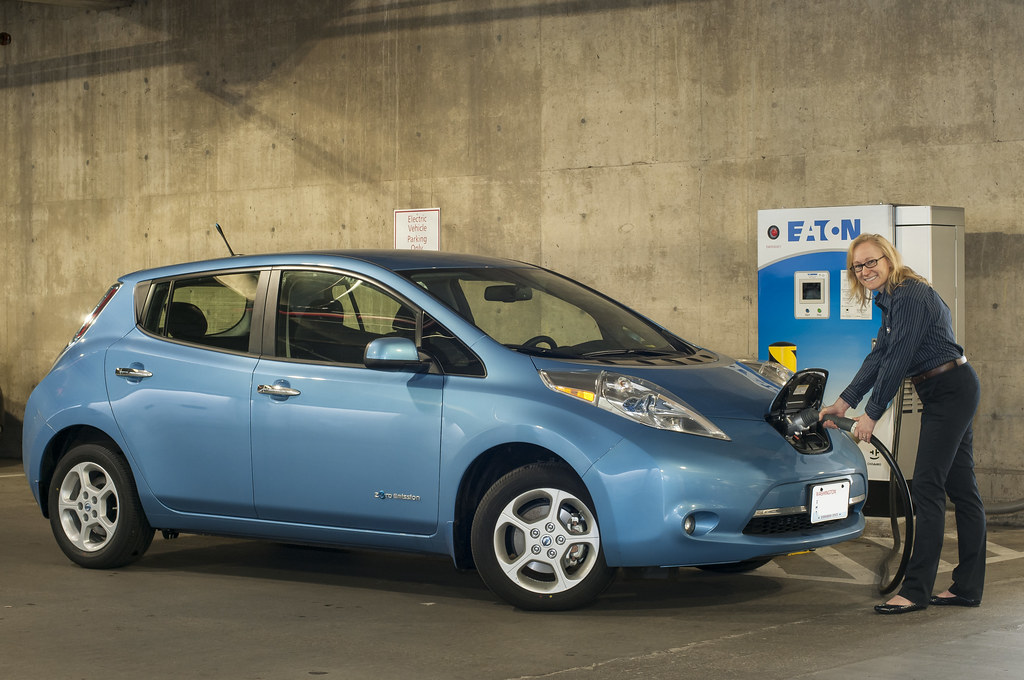
10. **Nissan Leaf: Slicing Through Air in the EV Era**
As the automotive world rapidly shifts towards electrification, the importance of aerodynamics has surged, becoming even more critical for electric vehicles (EVs). The Nissan Leaf stands as a stellar example of an EV meticulously designed to harness aerodynamic principles, demonstrating how a smooth, purpose-built silhouette can significantly extend driving range and enhance overall efficiency in the electric era.
For EVs, every watt of energy saved directly translates into greater driving range, making aerodynamic efficiency paramount. The Nissan Leaf’s smooth EV design is a direct response to this need, engineered to slice through the air with minimal drag. Its distinctive rounded nose, integrated headlights, and gently rising roofline all contribute to a profile that actively reduces air resistance, ensuring that the battery’s energy is used as efficiently as possible for forward motion.
Moreover, the Leaf incorporates advanced aerodynamic features that are crucial for EV performance. While not explicitly visible, its design philosophy encompasses elements like a potentially smoother underbody, which minimizes turbulence beneath the car, and aero-optimized wheels that reduce airflow disruptions around the tires. These details, though subtle, are vital for squeezing every possible mile out of its battery pack, addressing one of the primary concerns for EV drivers.
By focusing intently on creating a low-drag body, the Nissan Leaf exemplifies how electric vehicles are leveraging design to overcome range anxiety and deliver practical, sustainable transportation. It’s a testament to how engineers are adapting aerodynamic science to meet the unique demands of electric powertrains, showcasing that smart design is just as crucial as battery technology in shaping the future of efficient motoring.
Car Model Information: 2016 Nissan Titan XD PRO-4X
Name: Nissan Leaf
Caption: Third generation Nissan Leaf
Manufacturer: Nissan
Production: October 2010 – present
ModelYears: 2011–present
Class: Unbulleted list
BodyStyle: Unbulleted list
Layout: Front-engine, front-wheel-drive layout
Predecessor: Unbulleted list
Categories: 2020s cars, All articles containing potentially dated statements, All articles with dead external links, Articles containing Japanese-language text, Articles containing potentially dated statements from December 2015
Summary: The Nissan Leaf (Japanese: 日産・リーフ, Hepburn: Nissan Rīfu; stylized as LEAF) is a battery-electric car manufactured by Nissan, produced since 2010. It was offered exclusively as a 5-door hatchback which since then has become a crossover SUV model. The term “LEAF” serves as a backronym to leading environmentally-friendly affordable family car.
The Leaf was unveiled on 1 August 2009 as the world’s first mass market electric and zero-emission vehicle. Among other awards and recognition, it received the 2010 Green Car Vision Award, the 2011 European Car of the Year, the 2011 World Car of the Year, and the 2011–2012 Car of the Year Japan. The Leaf’s range on a full charge has been steadily increased from 117 km (73 miles) to 364 km (226 miles) (EPA rated) by the use of larger battery packs and several minor improvements.
As of September 2021, European sales totalled more than 208,000, and as of December 2021, over 165,000 had been sold in the U.S., and 157,000 in Japan. Global sales across both generations totalled 577,000 by February 2022. The Leaf was the world’s all-time top selling plug-in electric car until it was surpassed in early 2020 by the Tesla Model 3.
Get more information about: Nissan Leaf
Buying a high-performing used car >>>
Brand: Nissan Model: Leaf
Price: $19,461 Mileage: 128,080 mi.

11. **Active Aerodynamics: The Future of Dynamic Control**
The horizon of automotive design is illuminated by the promise of active aerodynamics—a truly dynamic approach to managing airflow that moves beyond fixed shapes to embrace real-time adaptability. This revolutionary concept involves vehicle components that can physically adjust their position or shape in response to current driving conditions, presenting an unparalleled opportunity to optimize both efficiency and performance simultaneously.
Imagine a vehicle that can subtly alter its form based on whether it’s cruising down a highway, tackling a winding road, or accelerating for an overtake. Active aerodynamic systems make this a reality, deploying or retracting elements like adjustable spoilers, active grilles, or even deployable air dams. These components are not static ornaments; they are sophisticated parts of a system that continuously monitors speed, steering input, and other factors to make instant, intelligent adjustments.
The benefits are twofold and profound. At high speeds, active systems can retract or flatten elements to minimize drag, allowing the car to glide more effortlessly, directly boosting fuel efficiency or extending EV range. Conversely, when aggressive cornering or high-speed stability is paramount, these systems can deploy to generate crucial downforce, pressing the tires more firmly onto the road and dramatically enhancing grip and control.
This dynamic interplay represents a significant leap forward from traditional, static aerodynamic designs. It allows engineers to build cars that are not just efficient or sporty, but intelligently adaptable, capable of delivering optimal aerodynamic performance across an incredibly diverse range of driving scenarios. Active aerodynamics isn’t just a trend; it’s a fundamental shift in how vehicles interact with the air, promising a future of smarter, more responsive automobiles.
Read more about: The Porsche 918 Spyder: Hybrid Power, Record Speed, and Surging Investment Value
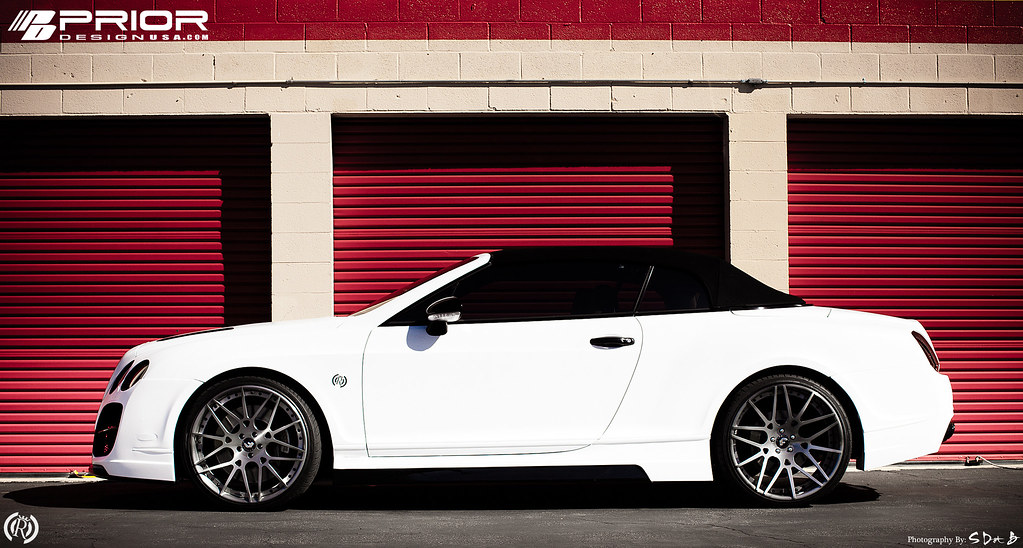
12. **Aerodynamics in Electric Vehicles: Maximizing Range and Efficiency**
For electric vehicles, aerodynamics isn’t merely a matter of improved performance or fuel savings; it’s absolutely fundamental to their practicality and success. As EVs rely entirely on battery power, every bit of energy saved by reducing air resistance directly translates into an extended driving range, making aerodynamic optimization a critical engineering priority that directly impacts user experience.
Unlike traditional internal combustion engine (ICE) vehicles, which require large, open grilles for engine cooling, EVs typically have much lower cooling demands for their electric motors and battery packs. This inherent difference provides designers with a unique opportunity: to craft vehicles with far sleeker, more enclosed frontal areas and smoother overall profiles. This allows for designs that are inherently more aerodynamic from the ground up, maximizing efficiency without compromising functionality.
Modern EVs showcase a suite of aerodynamic advancements specifically tailored to maximize range. This includes completely flat underbodies, which eliminate the turbulent airflow caused by exposed components underneath a car, significantly reducing drag. We also see the widespread adoption of aero-optimized wheels with special designs and covers that minimize air disruption, along with retractable or flush door handles that ensure an uninterrupted flow of air over the vehicle’s sides.
Ultimately, the future of electric mobility is inextricably linked to advancements in aerodynamics. As battery technology continues to evolve, so too will the ingenuity in shaping EV bodies to be as slick and efficient as possible. These ongoing innovations ensure that electric vehicles can travel further on a single charge, making them more practical, more appealing, and ultimately, a more sustainable choice for the modern driver. It’s a compelling illustration of how intelligent design truly drives efficiency, not just under the hood, but across every curve and surface of the vehicle.
Read more about: CNET’s Top Picks: The 13 Best Vehicles for Conquering Camping and Overlanding Adventures
So, whether you’re eyeing a new model or considering a trusted used Japanese car, remember to look beyond the engine specifications. The shape of a car, sculpted by the invisible forces of air, profoundly influences its efficiency, stability, and overall driving pleasure. It’s an engineering marvel that continues to evolve, shaping not just how our vehicles perform, but how we move into the future.




